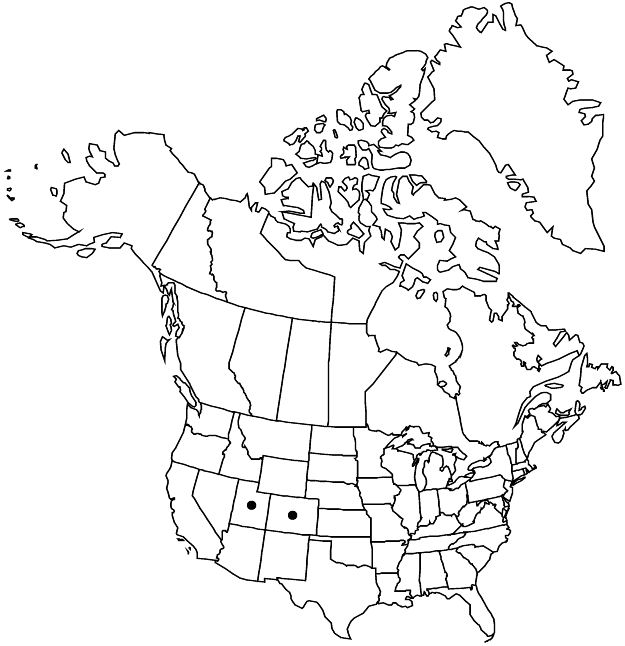Euphorbia nephradenia
Leafl. W. Bot. 10: 314. 1966.
Herbs, annual, with slender little-branched taproot. Stems erect to ascending, branched, dichotomous distally and slightly angled, 4–25 cm, glabrous or sparsely strigillose. Leaves opposite; stipules 0.1–0.2 mm; petiole 2–6 mm, glabrous or sparsely strigillose; blade usually linear- to narrowly-elliptic, occasionally ovate to obovate, 14–42 × 3–10 mm, progressively narrower distally, base attenuate, margins entire, apex usually acute, rarely obtuse, surfaces glabrous or sparsely strigillose; venation inconspicuous. Cyathia solitary at distal bifurcations of stems; peduncle 0.6–2.4 mm, glabrous or strigillose. Involucre campanulate, 1–1.1 × 1.2–1.4 mm, strigillose at least toward apex; glands 5, green-yellow, oblong, 0.4–0.6 × 0.7–1 mm; appendages whitish to yellow-green, lunate to broadly ovate, 0.2–0.5 × 0.7–1.1 mm, entire or slightly crenulate. Staminate flowers 25–30. Pistillate flowers: ovary glabrous; styles 0.7–1 mm, 2-fid at apex. Capsules oblate to subglobose, 2.9–3.2 × 3.2–3.4 mm, glabrous; columella 2.8–3.1 mm. Seeds light gray to whitish, oblong-ovoid, rounded in cross section, 2.3–2.6 × 1.3–1.5 mm, dimpled and rugulose; caruncle absent.
Phenology: Flowering and fruiting spring–summer.
Habitat: Saltbush, blackbrush, Ephedra-dominated scrub and desert communities.
Elevation: 1100–1500 m.
Distribution

Colo., Utah.
Discussion
Euphorbia nephradenia is the only species of the genus endemic to the Colorado Plateau of Utah and adjacent Colorado.
Selected References
None.